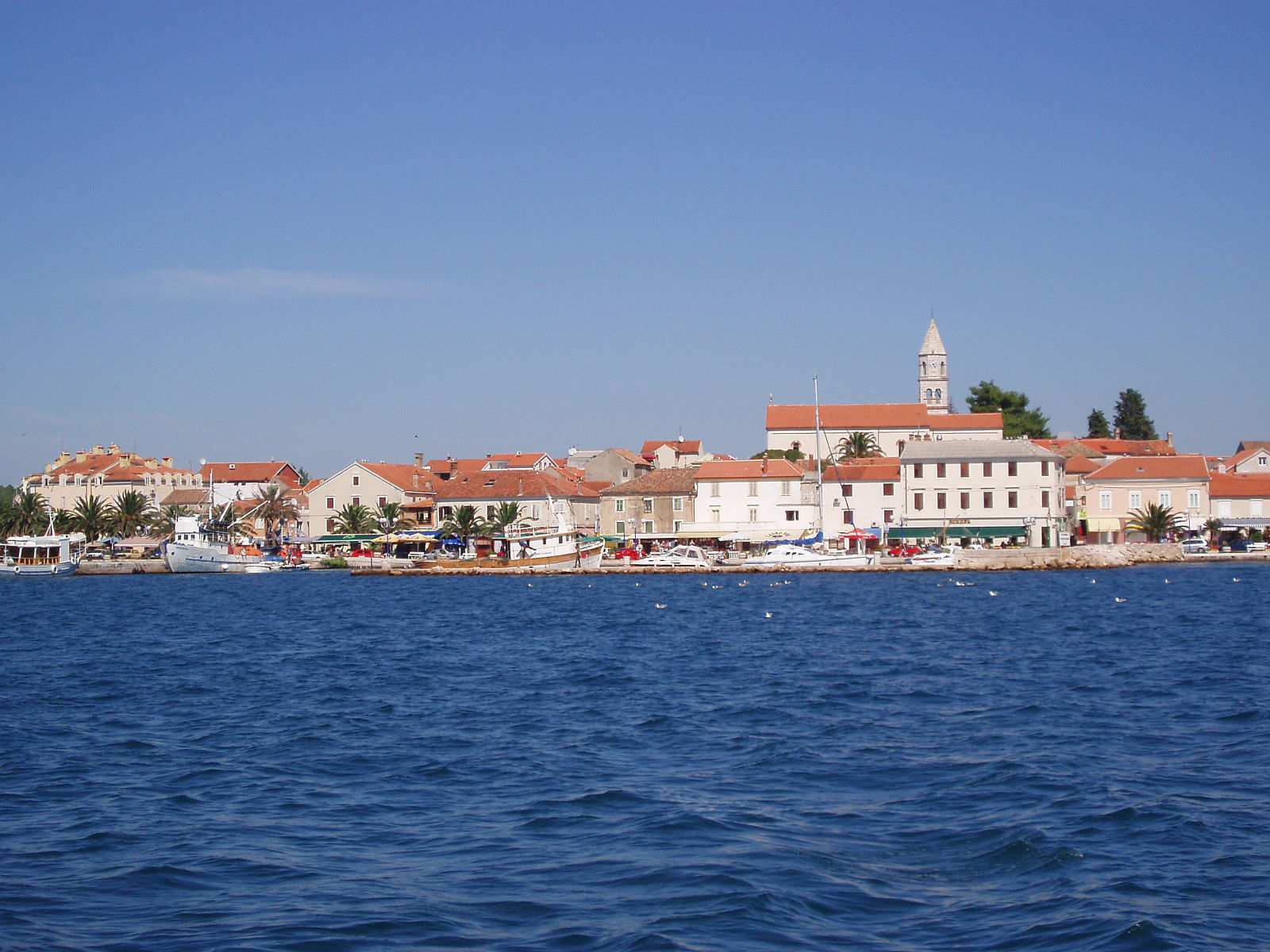Looking for Car-Friendly Accommodation in Dubrovnik? Why You Should Skip the Center
January 21, 2020 - Did you know that the City of Dubrovnik will establish a traffic congestion zone around the historic core of the city, which could ultimately affect tourists renting in the area?
Namely, the first phase of this traffic solution will relate to tourist buses and passenger cars 8 + 1, or vans, which is expected already in the upcoming tourist season.
“The City is working on introducing a congestion zone around the City. In the first phase of the project, four cameras will be erected in the area near the public garage on Zagrebačka Street, above the Tourist School at the exit towards Ul. Druge dalmatinske brigade, one camera will be at Pile and one on Ul. branitelja Dubrovnika. These are modern, up-to-date camera systems that will be able to recognize vehicle plates as well as vehicle dimensions,” explained Djuro Šutalo.
So, what are these cameras for, anyway?
This video surveillance will facilitate the detection of vehicles that are in the traffic congestion zone outside the reserved term, or are staying longer than the allowed time at Pile or Ploče. Misdemeanor proceedings will be conducted for vehicles without a valid permit.
More specifically, only vehicles with privileged tickets will be able to pass through the area around the historic center, which are residents of the City of Dubrovnik and the neighboring municipalities.
“In 2020, we are introducing the first phase for buses and vans, and this year we will see how the system works,” said Šutalo. Whether tourists will be able to get to their apartments, for example, those renting in Ploče, is a question that worries many renters - and there is a considerable number in the area.
At this point, Šutalo cannot answer that question.
We do know that taxi drivers can travel freely through Zagrebačka Street this year, though changes could be possible for taxis come 2021, depending on how the new system flows.
The City believes that establishing a traffic congestion zone around the historic core of the City, as well as other traffic solutions they introduce, will achieve systematic management and development of the traffic system. Above all, there will be significant relief from traffic around the historic core.
So, what will this mean for renters?
If you’re traveling to Dubrovnik by car, whether it is with your personal vehicle or transfer service, think about booking accommodation outside the busy city center.
Make your life even easier by booking with Solo Transfers. You can check out their rates to Dubrovnik on their website.
Source: Dubrovacki Vjesnik
To read more about travel in Croatia, follow TCN’s dedicated page.
Five Reasons Why You Should Visit Split this Winter
November 21, 2019 - Why should you visit Split this winter? A closer look.
When thinking about Split, we’re relatively sure you imagine the summertime, as the word is almost synonymous with a holiday in the hot sun. But those of us who have been lucky enough to experience Split in the wintertime will tell you that this Dalmatian hotspot is worth visiting any time of the year.
While the sea may be too cold to swim and you shouldn’t count on getting tanned, Split in the winter is magic. And we’re here to tell you why.
Advent celebrations
One of the more obvious reasons Split lights up in the wintertime is thanks to Advent, a festive holiday celebration held for all of December that can get any grinch into the Christmas spirit. Split is known as one of the more unique Advent celebrations - or where Christmas meets the coast. The seaside city transforms into a winter wonderland, where locals and visitors can imbibe in warm mulled-wine, steamy sausages, and cultural concerts and events. This year’s Advent will even feature an ice skating rink at Dardin park in the heart of the city, while the party at Perivoj should not be skipped.
Winter menus
One of the best things about winter is the food - and the fact that you can enjoy it all since no one will see you in a swimsuit anytime soon. One thing Split can boast is a thriving restaurant scene with creative brains behind them who use the changing seasons to craft unique menus for their faithful patrons to taste. This is no different in the winter, where you’ll find hearty winter menus on display at many of the restaurants in the center. Better yet, many restaurants choose to honor the locals in the offseason with promotional menu prices - from 3 courses to 8!
Winter concert schedule
While the summer may be known for its party, the winter in Split is when the real fun happens - and that’s mostly thanks to a packed winter concert schedule. Many venues that close for the summer reopen in the winter to give the locals a place to let loose in the offseason. Some of Croatia’s biggest pop stars, singers, and rock groups will take the stage in Split throughout the season in a more intimate setting than you can imagine at a summer festival. From Severina to Pshihomodo Pop, this winter in Split will be anything but dull.
No crowds
Another apparent reason Split is enjoyable in the winter is the lack of crowds. While the empty alleyways may be eerie to some, for the locals, they are a dream. Tour groups no longer pack into the center like sardines in a can, and we are given a chance to walk peacefully around the city to admire the ancient history around us. You’ll also find that you can breathe visiting museums or many of Split’s famous attractions, which promises even better photos for you to take home in the end.
The weather
There is one fundamental rule you should follow in Split - and that is never to forget your sunglasses no matter the time or the weather. But whoever coined this golden rule was certainly onto something, and that’s because the weather in Split often calls for the sun. It doesn't matter that it is winter, the forecast in Split could call for sunshine, and the cafes on the Riva could be as packed as a hot summer day.
If you’re thinking about visiting Split this winter, let Solo Transfers lead you there! Offering professional, reliable, and stress-free services at a friendly price, you won’t want to travel any other way. You can find out more information on their website.
To read more about travel in Croatia, follow TCN’s dedicated page.
Heading from Zadar to Split? Your Road Trip Guide Down Dalmatia's Coast
October 16, 2019 - Just because summer is over doesn’t mean the fun has to end. Let Solo Transfers lead the way on your offseason road trip from Zadar to Split.
The offseason in Croatia has its perks - and if the summer weather we’ve been experiencing this October is any indication, you’ll never want to travel in the peak season again! Warm temperatures averaging in the mid-20 degrees Celsius, high sea temps, a relatively absent bura wind, and no sign of rain are just some of why we’ve been loving autumn so far - and the fact that the crowds have considerably thinned is a bonus.
So, why stop the summer fun just because the season has changed? October is the ideal time to get out of the house and onto the roads to explore Croatia’s coast. This time, we’re bringing you the top 5 road trip pit tops from Zadar to Split.
Biograd na Moru: Just 40 minutes south of Zadar is Biograd na Moru, the former capital of the medieval Croatian Kingdom. While it was first mentioned in the mid-10th century, this coastal town is also unique because it is located between Croatia’s largest freshwater lake (Vrana Lake) and 300 islets - it is the pathway to the Kornati islands, after all. The town is glittered with ancient churches, its Native Museum houses the evidence of its turbulent past, and the Mediterranean spirit is alive in the town’s bars and restaurants.
Commons
Murter/Tisno: One small bridge connects the island of Murter to Croatia’s mainland, which you’d be silly to miss on your coastal road trip. Just over an hour away from Zadar and about 20 minutes south of Biograd is Tisno, a town on the island of Murter, which you can get to thanks to this Tisno Bridge. While Tisno has become a hotspot over the years thanks to a summer of electronic music festivals, the other eight months out of the year, the island maintains the simple, tranquil, and painless lifestyle of a fisher. Murter, however, does boast one of Croatia’s restaurants - Konoba Boba, by chef Vjeko Basic.
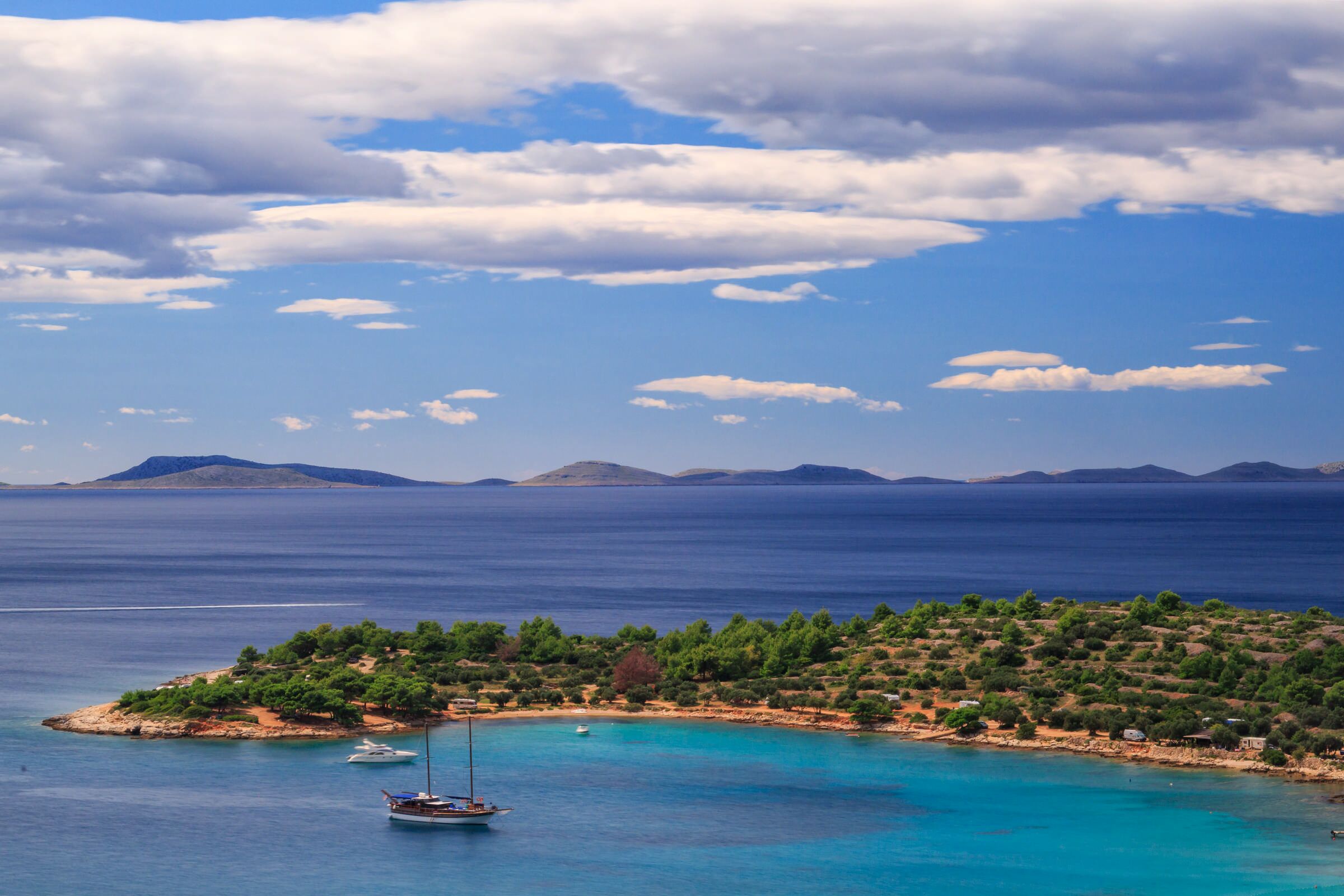
Copyright Romulic & Stojcic
Sibenik/Krka National Park: From Murter, its easy to hit Sibenik - Croatia’s oldest native town on the Adriatic. It is known for the St. Stephen’s Cathedral, a UNESCO Heritage Site, but also for its many fortresses - St. Michael’s, St. Nicholas’, St. John, and Barone. And it also boasts one of Croatia’s Michelin-starred restaurants (hello, Pelegrini!). While you’re already in Sibenik, a stop at Krka National Park is a no brainer. Located just 20 minutes from Sibenik, you’ll be taking photos at the famous waterfalls in no time.
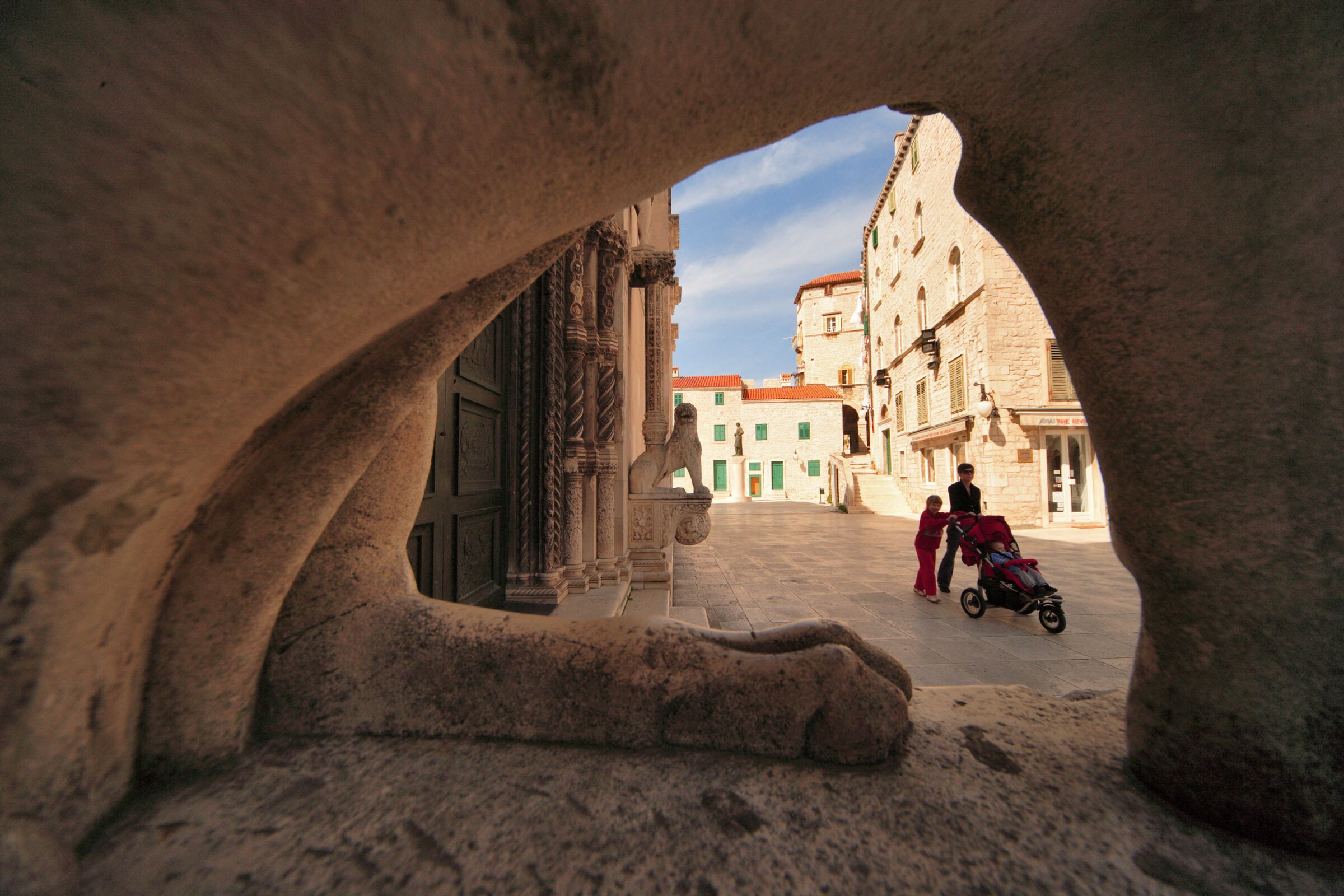
Copyright Romulic & Stojcic
Primosten: This ancient town dates back to 1564, though under a different name - Capusta Cista. Once an island, too, Primosten was connected to the mainland by a bridge in the 16th century and later evolved into the peninsula we know it as today. Known for its vineyards and donkey races, Orson Welles loved Primosten so much he bought a home there. Today, you can enjoy Primosten’s chilled vibe, beaches, and honey shops, or drive just outside the town to see one of the biggest shrines to the Virgin Mary in the world - Lady of Loreto.
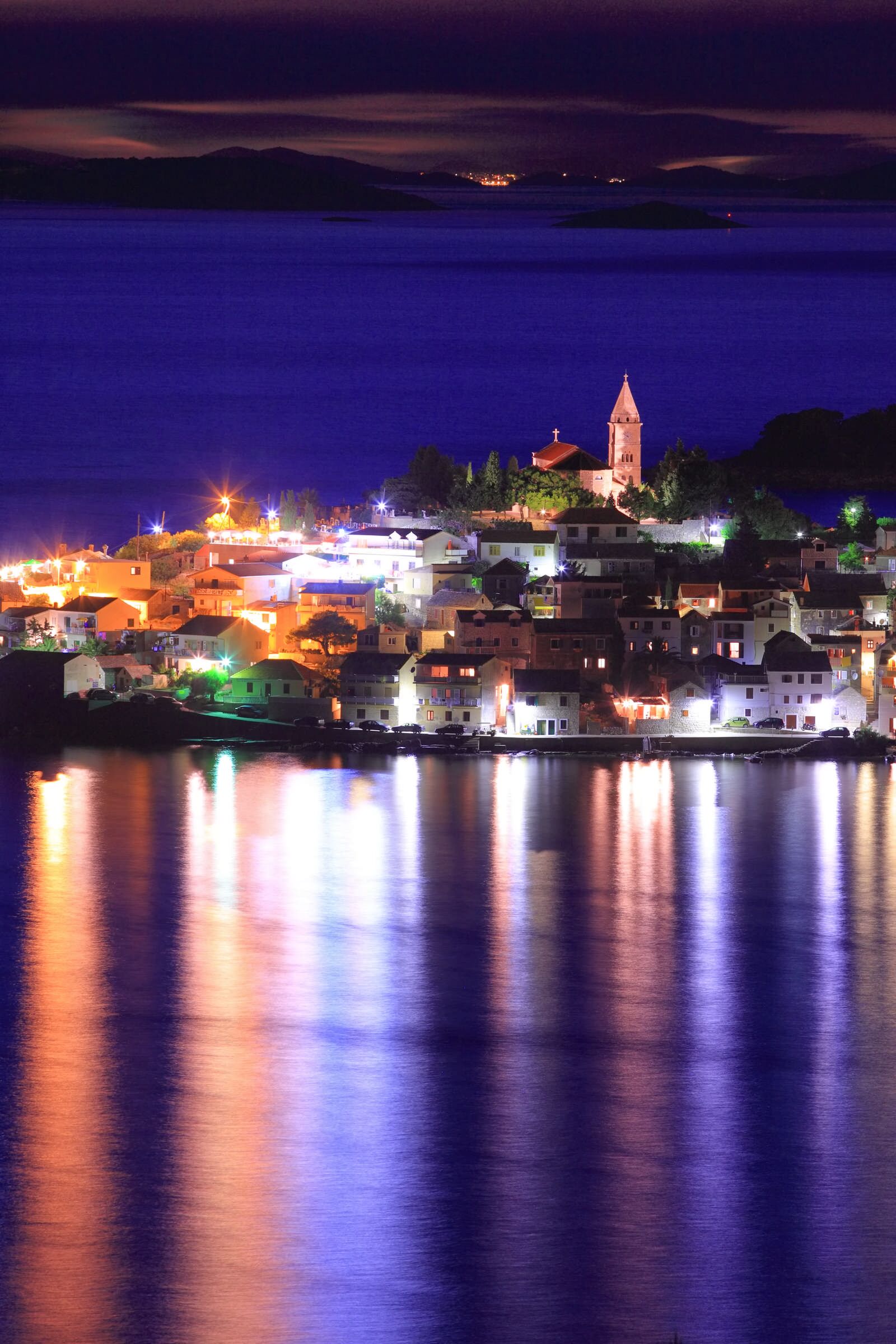
Copyright Romulic & Stojcic
Trogir: This UNESCO-protected museum town is an hour and a half from Zadar, and 30 minutes away from your final destination - Split. From the Venetian Kamerlengo fortress built in the 1400s to the St. Lawrence Cathedral or many palaces that decorate the city center, you’ll never grow tired of things to see in this charming town. Apart from the town’s ancient history, Trogir is not only home to the first pharmacy in Europe - but it was also a film location for Game of Thrones!

Copyright Romulic & Stojcic
If you’re after a good road trip but don’t feel like taking the wheel, Solo Transfers will get you from point A to B, and anywhere in between. Thanks to their safe, reliable, and professional staff, you’ll never want to travel any other way. You can find more information on the Solo Transfers website and find out price estimates for your next trip from Zadar to Split.
To read more about travel in Croatia, follow TCN’s dedicated page.
Getting to Croatia Easier than Ever for Tourists from USA, Canada, Australia
September 6, 2019 - And getting to your destination in Croatia has never been easier thanks to Solo Transfers.
Croatia has proven to be one of the most popular destinations for a summer holiday, though it’s not hard to see why. While the sweltering sun and sparkling sea are shoo-ins for the summer, Croatia’s capital and continental region offer year-round tourism and an exciting alternative for adventure tourists and cyclists.
Croatia’s popularity doesn’t look like its going anywhere anytime soon, so it’s no surprise that it didn’t take long for some of the world’s top airlines to catch onto the Croatia buzz and ensure their passengers can get to the destination comfortably, without too many connections, and, perhaps most importantly, with ease.
Some of Croatia’s biggest markets, like the USA, Canada, and Australia, are luckier than ever to have connections carrying them to Croatia with convenience.
Recall, travelers in America can be thankful that American Airlines connected the United States and Croatia for the first time in almost 30 years with their seasonal service between Philadelphia and Dubrovnik this summer. The Oneworld member began operations between Philadelphia and Dubrovnik from June 7, which will run until September 27, 2019. The airline will add a fourth weekly flight on Sundays in September and already announced that there is no slowing down next year. Thus, American Airlines will operate the Philadelphia-Dubrovnik route daily in 2020, which will commence on June 4, 2020!
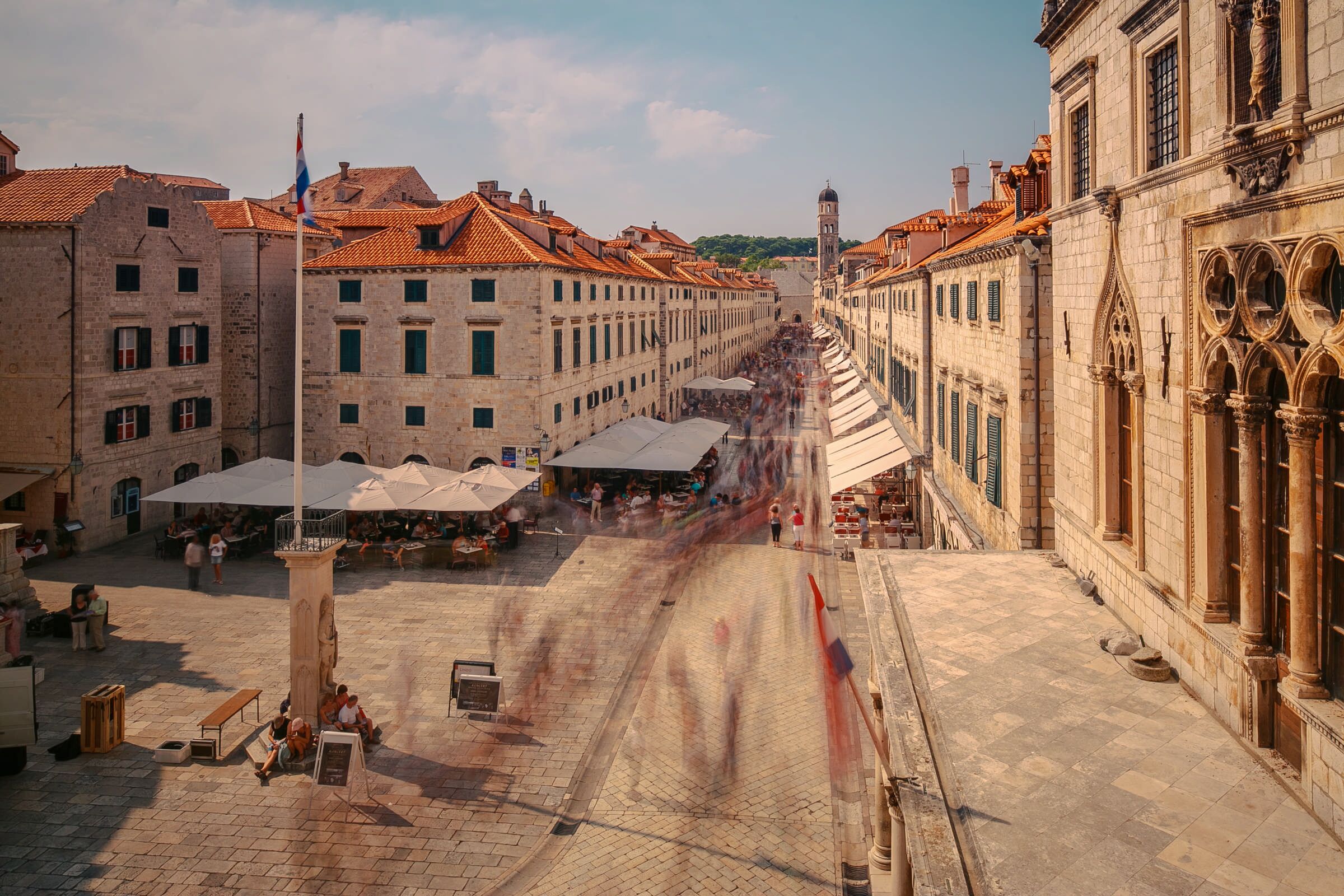
Copyright Romulic & Stojcic
Furthermore, back in 2018, Air Canada Rouge commenced its seasonal service from Toronto to Zagreb, which saw the return of the Air Canada brand to Croatia after 27 years. Air Canada operates four times a week between Toronto and Zagreb and runs until October. Air Transat also operates between the two cities on Tuesdays, Thursdays, and Sundays during the peak season.
And our friends from Australia haven’t been left out, either. Since many Australians fly over Dubai onwards to Croatia, the daily Emirates connection between Zagreb and Dubai has been a lifesaver. However, FlyDubai will operate the Zagreb-Dubai line instead of Emirates this winter, just as they did last winter. Namely, FlyDubai will replace Emirates for the entire winter flight schedule, and take over operations from October 27, 2019, to March 28, 2020. Thus, after November 11, no flights will run on Tuesdays and Thursdays, while some weeks will have no flights on Mondays. The daily frequency returns around the Christmas and New Year holidays, i.e., from December 13, 2019, to January 13, 2020.
Because getting to Croatia is now easier than ever, wouldn’t it make sense that getting to your Croatian destination should follow suit? Thanks to Solo Transfers, you can count on a reliable and friendly transfer service to get you where you need to go. Whether you’re flying in from the States to Dubrovnik, or trekking from Canada or Australia to Zagreb, Solo Transfers promises door-to-door service any time of the year.
You can read more about Solo Transfers here.
To read more about travel in Croatia, follow TCN’s dedicated page.
Your Split to Zagreb Road Trip Itinerary, with a Plitvice Pit Stop
February 4, 2019 - With the spring season a month and a half away and summer hitting us before we know it, we hope we can make these bleak winter days go by a bit quicker with ideas for your 2019 holidays. Like road-tripping from Split to Zagreb, for example.
Perhaps one of the most popular year-round routes in Croatia, getting from Split to Zagreb doesn’t have to be painful. Sure, you can get there with a 30-minute flight (though it’ll cost you a pretty penny), and then there’s the bus, the far more affordable option, though delayed buses and 5 and a half hour journeys don’t work in favor of all travelers.
Instead, we suggest you hop in the car and take a road trip from the Dalmatian capital to the Croatian capital, and make a nature pitstop along the way.
Namely, your journey from Split to Zagreb is best traveled with a stop in what we like to consider the ‘8th Wonder of the World’ - Plitvice Lakes National Park.
Because we assume that 99% of travelers coming to Croatia are familiar with this natural gem, or better yet, that their trip to Croatia is motivated solely by the fact that you can frolic amongst these mesmerizing waterfalls, why wouldn’t it be a part of the journey from one capital to the next?
Allow us to map it out for you.
You’ll begin in Split, the capital of Dalmatia and once the home of Roman Emperor Diocletian. You’ll spend your days admiring the 1,700-year-old palace of Diocletian, the narrow stone alleyways, the thriving coffee culture you can enjoy from a bustling waterfront, the spirited local restaurant and bar scene, and the vibrant ancient history surrounding you with every step you take.
After you’ve entirely consumed all that Split has to offer, you’ll hop in the car and head north to Plitvice Lakes National Park. Just under three hours away by car, you’ll be strolling through this mountainous karst area of Croatia in no time. You’ll gawk at its 16 cascading lakes, travertine barriers, flora and fauna, and vivid colors ranging from green to grey and blue. Once you’ve taken enough photos to kill the memory on your smartphones and are ready to depart from this experience in nature with a full heart, Croatia’s capital city awaits.
Zagreb is just two hours away from Plitvice by car - and just enough time for a solid nap before you head out to explore yet another new city. Zagreb is Croatia’s quirky capital which prides itself on its laidback vibe, lively cafe society, and architecture ranging from Gothic to contemporary. Zagreb is also known for boasting the most museums per capita than anywhere else in the world. You’ll revel in its street art, savor in its international cuisine, and won’t find a minute to spare once you've started your adventure here.
While we know that driving in Croatia may not be for everyone, we do have one solution we think you’ll like - Solo Transfers. Croatia’s reliable private transfers company, Solo Transfers is one of the easiest and most convenient ways to book your travels - and did we mention the most stress-free? Because all road trips should be made easy, you can find everything you need to know about booking with Solo Transfers on their website.
To read more about travel in Croatia, follow TCN’s dedicated page.
Dalmatia vs. Istria: What's the Better Road Trip Region?
January 27, 2019 - So, you’re planning a road trip through Croatia, but you’re torn on where to go? We’re not surprised, and trust us when we say that you’re not alone. A blessing and a curse, Croatia is a country with almost too many gems - if that’s even possible. Because we know your holidays are sometimes limited and you want to pack in as much as you can while you’re here, we thought we’d bring you the pros and cons (er, just the pros) of road tripping through two of Croatia’s most popular regions - Istria and Dalmatia.
Istria
If you don’t know much about Istria, allow us to enlighten you. Istria is located in the northern part of Croatia and is the largest peninsula in the Adriatic. While it could be considered one of Croatia’s lesser-known regions (depending on who you talk to), it is gaining popularity quickly - and you can thank Anthony Bourdain for his No Reservations Croatia episode back in 2012.
What makes Istria really special, however, is its charm. From quiet medieval hilltop villages like Motovun, known for its annual summer film festival, to popular tourist destinations like Pula, known for having the only remaining Roman amphitheater with four side towers entirely preserved, Istria has something for every traveler - and it truly is best explored by car (also because public transport is often limited to the pearls of this region).
Istria is also the culinary king of Croatia. You might know it for its truffles and truffle hunting adventures, or for its Michelin-star restaurants, or maybe for its title as the best olive oil region in the world, and if you didn’t already know, you'd quickly learn that cuisine is king after your first bite.
Istria is a region of diversity, too - it boasts mountains and forests to seaside towns and islands - and rivers even run through it! But there is so, so much more we’ll let you explore yourselves.
Not to miss towns in Istria:
- Hum: because it is considered the ‘smallest town in the world’
- Rovinj: for its colourful alleyways and art
- Pula: for its Roman ruins
- Motovun: because it's like Croatia’s Tuscany
- Labin/Rabac: because this is where the green hills meet the sea
- Anywhere in Central Istria
Dalmatia
We’re pretty sure that if you’ve heard of Croatia, chances are, you’ve heard of Dalmatia. Croatia’s bustling coastal region famous for its islands and UNESCO towns, Dalmatia is the region of Split (and Diocletian’s Palace), Hvar (known for parties and yachts, and definitely yacht parties), Krka (for its waterfalls you can swim in), and Dubrovnik (known as the ‘Pearl of the Adriatic).
While a trip through Dalmatia will be much busier than one through Istria, you’ll also have more amenities on hand. Split, for example, is Croatia’s second largest city - and while its Old Town is ancient, its outskirts provide anything you need (like three of the largest shopping malls in the region).
Apart from shopping, Dalmatia has plenty of perks - like island hopping, or canyoning down the Cetina river, or hiking Biokovo mountain. Dalmatia is bursting with museums and history, from the Romans to the breakup of Yugoslavia. Dalmatia’s coastal towns are the pride of every fisher - and the food, like black cuttlefish risotto or classic grilled fish soaked in garlic and olive oil is so simple, yet will be remembered as one of the best meals you’ve ever had.
Known as one of the most beautiful coastlines in the world by CNN Travel, exploring Dalmatia by car should be one of your top bucket list items.
Not to miss towns in Dalmatia:
- The obvious Zadar, Šibenik, Split, Dubrovnik
- Primošten: because its center is located on an island that is connected with the mainland
- Trogir: because it is a UNESCO paradise
- Omiš: because of pirates, fortresses, and soparnik
- Baćina lakes: because you’ll be mesmerised
- Anywhere in the Neretva Valley for mandarins and frogs
- Ston: because of oysters and the European ‘Great Wall of China’
- Any tiny coastal village along the way
After you’ve decided which region you’d like to explore, you can make your trip even easier by using Croatia’s trusted private transfer service Solo Transfers. A reliable transfer company with friendly and professional drivers that will take you wherever you want to go, your Croatian road trip will be one for the memory books.
To find out more about Solo Transfers, check out their official website.
To read more about travel in Croatia, follow TCN’s dedicated page.
Split to Dubrovnik: Your Road Trip Itinerary
January 19, 2019 - To no one’s surprise, traveling from Split to Dubrovnik may be the most frequented route for tourists coming to Croatia - and specifically Dalmatia. While there are more than a few options on hand when going from one coastal town to the other, depending on whether you choose the bus, plane, boat, or car, you’ll get from the Dalmatian capital to the Pearl of the Adriatic anywhere between 1-6 hours, give or take.
Though if our opinion had any influence on your choice, we’d suggest you take a drive down the coast - and this is primarily because of the roadside charms you’ll find along the way.
Here’s how we think your road trip itinerary should look from Split to Dubrovnik.
Split to Omiš
Your first stop after leaving Split should be in Omiš, which is less than an hour away (though you should potentially factor in seasonal traffic). Omiš is known as the town where the Cetina River meets the Adriatic - and it’s also known for its history of pirates and klapa singing. Omiš also boasts many attractions, such as fortresses from the 13th (Mirabella) and 15th-century (Fortica), a precious old town, a 10th-century church, and perhaps best of all to keep your road-trip-hunger curbed - Soparnik, a Swiss chard savory pie that has been declared as intangible cultural heritage of Croatia by the Croatian Ministry of Culture.
From Omiš to the Makarska Riviera
Your next stop on the road trip should be, well, literally anywhere on the Makarska Riviera. While the town of Makarska marks the center of the Riviera and is perhaps the most famous for its Franciscan Monastery, unique museums, and churches, there are other stops you absolutely shouldn’t miss. Take one of Croatia’s best beaches, Brela, for example, or the town of Tučepi, which is known for having one of the longest beaches in Croatia. Or if you have more time to kill, don’t miss out on visiting Biokovo Nature Park!
From Makarska to Neum in Bosnia and Herzegovina
Did you know that you have to pass through Bosnia and Herzegovina on the road to Dubrovnik? Just an hour and a half away from Makarska is the town of Neum in Bosnia and Herzegovina, which is the country’s only access to the Adriatic Sea. A seaside resort town, Neum offers a variety of food, drink, and tobacco products at much lower prices than in Croatia - and if you’re hungry, make sure you try a mixed grill (and specifically čevapi) or a burek!
PS: Don't forget your passport!
From Neum to Ston
Just about a half hour away from Neum is the town of Ston, known for its oyster farming, salt works, and wall that is known as Europe’s equivalent to the Great Wall of China. Ston is a small town with just a few restaurants, but trying the oysters are a must - as is tasting the Ston risotto, which can be found at Kapetanova Kuća (Captain’s House), which was also named one of Croatia’s 100 best restaurants. And if you feel like you need to work off all the food from the trip, take a hike up the 3 kilometer Ston wall, which was built in the 14th century.
From Ston to Dubrovnik
The light at the end of the tunnel, Dubrovnik, is located less than an hour away from Ston, though one more stop could interest you. Precisely, the Trsteno Arboretum is known as the oldest arboretum in this part of the world - and it was also used as a filming location in the third and fourth seasons of Game of Thrones.
But the best part? If you don’t feel like making the drive but wish to see all the charms along the way, Solo Transfers is here to save the day. One of Croatia’s most trusted private transfers companies, Solo Transfers will take you door-to-door, and everywhere you wish in between on your Croatian adventure.
For more information on bookings, visit the Solo Transfers website.
To learn more about Split and Dubrovnik, follow TCN's travel section.
Tučepi from Split: Perfect Off-season Getaway in Croatia
Looking to explore the coastal gems of Dalmatia without the crowds? Let us take you from Split to Tučepi for the ultimate off-season getaway this winter.
Taking a Trip from Split to Makarska?
Because who said a trip down the coast isn’t just as good in the offseason?
Heading from Split to the Makarska Riviera? Listen Carefully...
Planning a trip to Makarska from Split? You might want to pay close attention...

